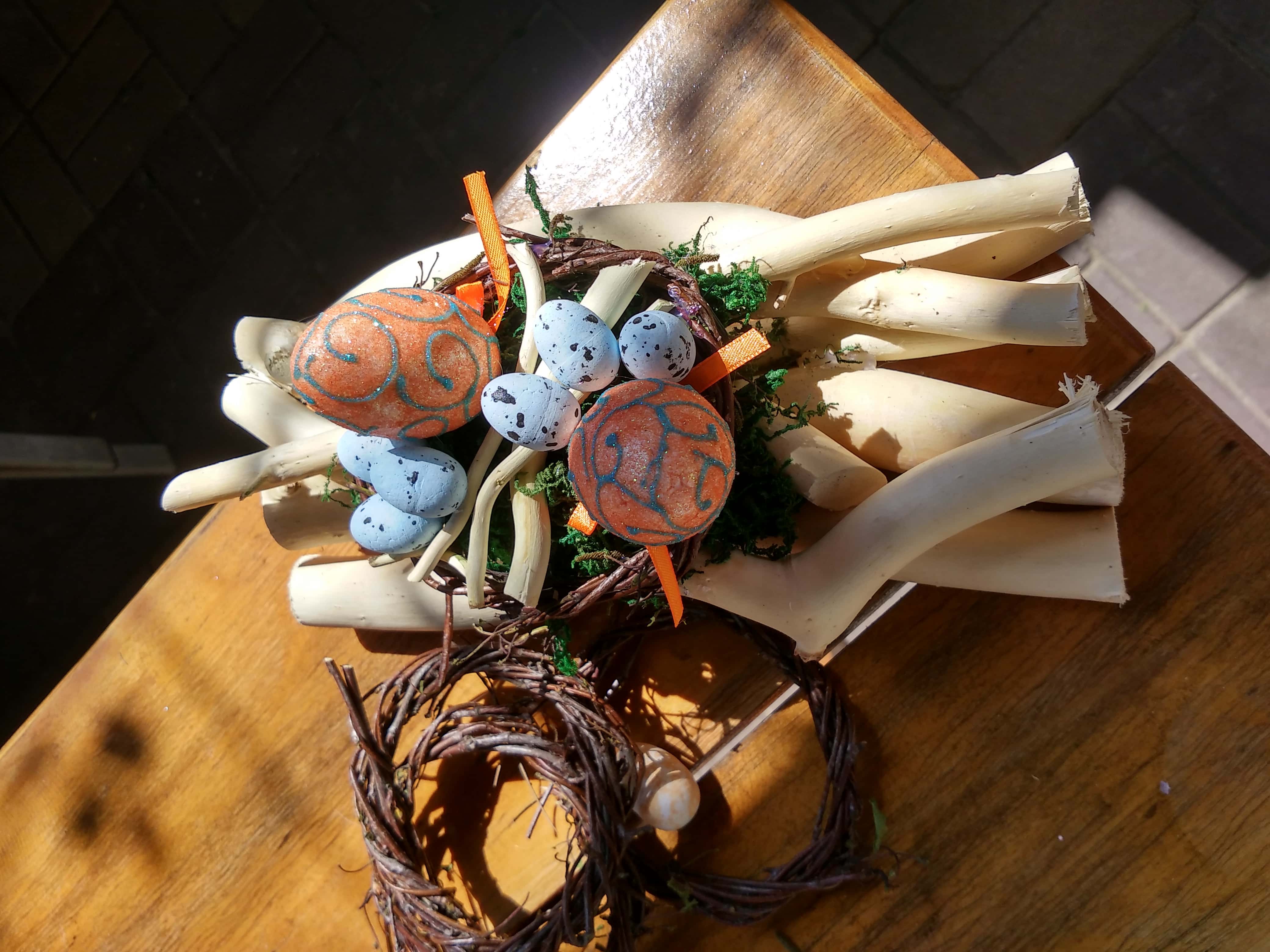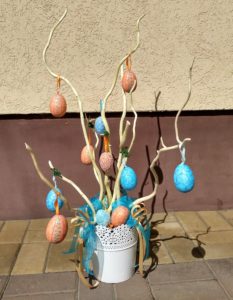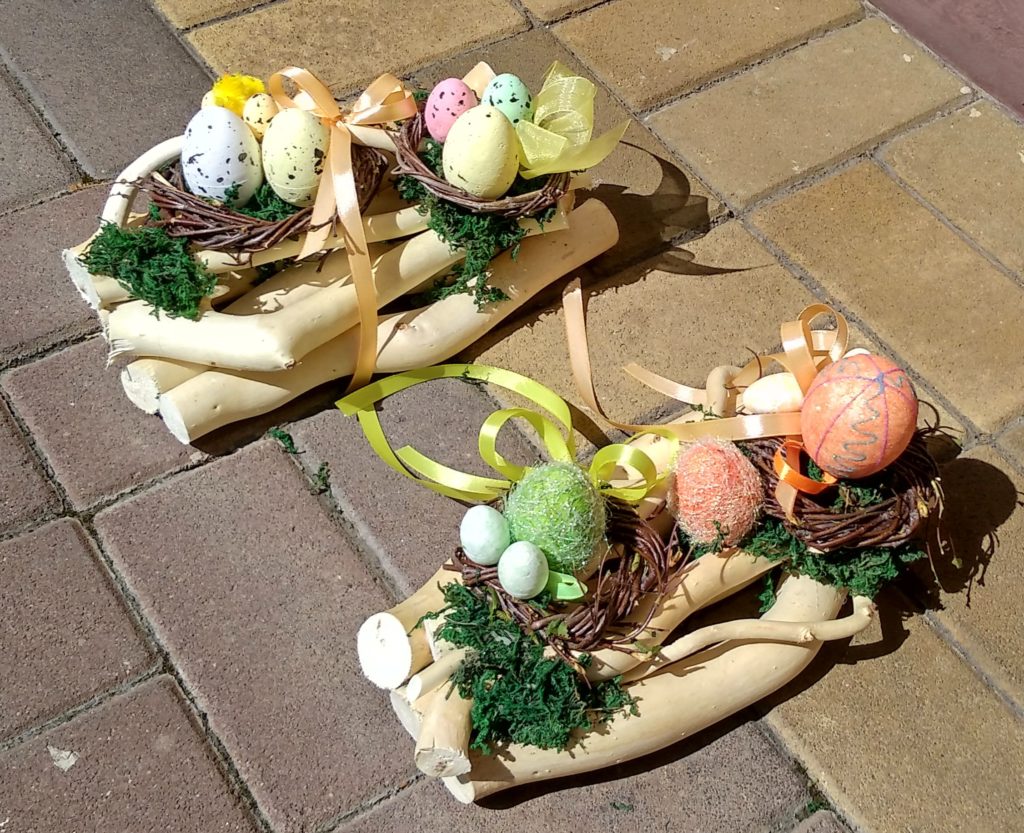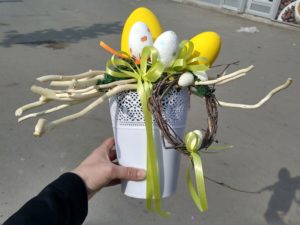Easter decorations and arrangements
Feeling festive? Easter festive? Bringing in and settling arrangements into homes is an act of contribution to the festivity of celebration. It enhances the amiable psychological feeling. It will emphasize your joy and thrill with every single glance toward special arrangement.
Replenish the interior
Easter arrangements just like any other have their specific elements.
Egg, nest, rabbit, chicken and some flowering branches are the shining stars of this subject. And let’s not forget colours. Use light green, yellow, blue, pink and certainly red – symbolizing The Egg.
Because of this, Easter decorations should resemble nature and be similar to your closest surrounding.
In order to get this effect, you should imitate nature by furling and grouping elements you plan to use.
Once placed and fixated in a bundle, curly willow branches (Salix matsudana) can be complimented with one or more nests. Slim birch branches are a good option for making smaller or bigger nests.
Easter horizontal ornamenting
If you opt for small nests, overlay them with natural peat moss, or real feathers. This can be the basis to which you add multicoloured eggs or small chicken imitations. Such Easter arrangements can be different in height and size. It depends on type and looks of surrounding space and interior they are meant to ornament. We call them the horizontal ones since they are “shallow”. It means you can use them as a table decoration, allowing you to look over them. You can use nests like these as an element on their own, or combine them with others creating complex decoration, as we did here:
Size and proportion matter
Vertical arrangements are usually the ones you make in pots (containers) or vases. If you prefer, they can be on their own. In that case, you should bind and consolidate them properly, so they can stand alone firmly.
However, the most important thing is size and proportion. Vertical decorations should be as tall as the room you place them into “allows” them to be. In most cases, these are one-sided decorations and the position they hold is a central one. They can be symmetrical as well, or have one, so called stronger point.
Vessels you plan to use for arranging can be made of different materials. Plastic, glass, wood or metal will do and you should try to stick to Easter-inspired colours. As for containers decorating materials, those can be budding or flowering wattles of shrubs (Forsythia, Cornus) or trees (Salix, Betula etc.). Branches you use can also be fresh, green, or dried white ones (as it was in our case). If so, they should be embellished with colourful eggs, ribbons, and moss. Like this, white branches are actually a perfect neutral basis for further expressing of your imagination.
Easter baskets and wreaths are also usual components of pots embellishment. Small baskets can be decorated with fresh, cut flowers, adding Easter elements like eggs, chicken and rabbit toys. Wreaths made of birch or willow twigs can be hanging on the front door or windows, previously enriched with ribbons, flowers, eggs etc.
Whichever element for Easter decoration you choose, the most important part is to include kids while making it, and don’t forget to have fun. Both you and your little helpers.
